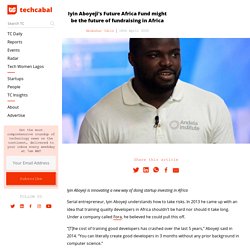Innovation reports
[Video] How to Innovate (As seen in Fast Company)
How to innovate?
![[Video] How to Innovate (As seen in Fast Company)](http://cdn.pearltrees.com/s/pic/th/innovate-billionaire-company-237996758)
It’s what keeps any CEO or founder worth their stock options awake at night. After all, innovation. It’s not a four-letter word. Crap is a four-letter word. So is mediocrity and the word average. Case in point is Tesla and SpaceX billionaire Elon Musk who said, “I’m interested in things that change the world or that affect the future and wondrous, new technology where you see it and you’re like, ‘Wow, how did that even happen? Notice that the many four-letter words are qualitative, not quantitative (that’s what allows me the above artistic freedom). The fascination with how to innovate and innovation in fact has a remarkably simple meaning when you look at its origin: ORIGIN mid 16th century: from Latin innovat- ‘renewed, altered,’ from the verb innovare, from in- ‘into’ + novare ‘make new’ (from novus ‘new’). How uncomplicated: “Making into something new.” How to innovate then, as it relates to branding, shows up in the form of: The closing lines of the essay struck a chord:
Tandfonline.
What the Lean Startup Method Gets Right and Wrong. The Lean Startup approach was an instant hit in Silicon Valley, as startups embraced this new experimental ethos.

Indeed, the evidence strongly suggest that startups should engage in experimentation along the lines pioneered by the Lean Startup... When someone finds out that I am an entrepreneurship professor, they tend to either ask me to listen to their startup pitch, or else they look at me quizzically and say: “But I thought entrepreneurship was all about improvisation. How can you teach entrepreneurship?” As a result, I have heard a lot of startup pitches (last year was blockchain; this year was CBD) but I also have thought about how to answer the bigger question: what can we teach founders to make their startups more successful? Fortunately, the last decade has given me a lot of valuable lessons I can share, and these lessons come from two different sources.
The Lean Startup approach was an instant hit in Silicon Valley, as startups embraced this new experimental ethos.
HuffPost is now a part of Verizon Media. HuffPost is part of Verizon Media.

We and our partners will store and/or access information on your device through the use of cookies and similar technologies, to display personalised ads and content, for ad and content measurement, audience insights and product development. Your personal data that may be used Information about your device and internet connection, including your IP address Browsing and search activity while using Verizon Media websites and apps Precise location Find out more about how we use your information in our Privacy Policy and Cookie Policy.
Iyin Aboyeji’s Future Africa Fund might be the future of fundraising in Africa. Iyin Aboyeji is innovating a new way of doing startup investing in Africa Serial entrepreneur, Iyin Aboyeji understands how to take risks.

In 2013 he came up with an idea that training quality developers in Africa shouldn’t be hard nor should it take long. Under a company called Fora, he believed he could pull this off. “[T]he cost of training good developers has crashed over the last 5 years,” Aboyeji said in 2014. “You can literally create good developers in 3 months without any prior background in computer science.” Months later, Aboyeji and his co-founder, Nadayar Enegesi, conceded that Fora wasn’t working. In 2015, they made the hard choice to shut down Fora. Aboyeji would later leave to start Flutterwave, the fast-growing fintech company. After six years operating these startups, Aboyeji retreated in 2018 to pursue a different path. From Flutterwave to building Future Africa “I see the practical challenges with the current funding model [of VCs], Aboyeji told me over the phone.
The key lessons from “Where Good Ideas Come From” by Steven Johnson. The ability of carbon to connect with other atoms was vital for the evolution of life, but a second, randomizing, force was also necessary: water.

Water moves and churns, dissolving and eroding everything in its path, thus fostering new kinds of connections between atoms in the primordial soup. Just as importantly, the strong hydrogen bonds of water molecules helped maintain those new connections. This mix of turbulence and stability is why liquid networks are optimal both for the evolution of life and for creativity. Innovative networks too must teeter on the brink of chaos, in the fruitful realm between order and anarchy, just like water. Random connections drive serendipitous discoveries. But it seems chaos and creativity are linked even on a neurological level.
Ideas are in fact manifestations of a complex network of neurons firing in the brain, and new ideas are only possible when new connections are formed. The period of time spent in either state differs from brain to brain.
Tech hubs across Africa to incubate the next generation. Nesta playbook for innovation learning. Journalism, Media, and Technology Trends and Predictions 2020. This year will see southern European media houses leaning more into subscription.

In Spain, El Mundo has already started to charge for premium content, with El País set to follow early in 2020. It is already asking readers to sign in (for free) to read opinion and weekend features in preparation for the change. This is a major shift of direction for publications that until recently have pursued a scale-based strategy (which has sometimes led to accusations of clickbait and low-quality journalism).
Payment options at El Mundo Other regional chains such as Vocento and Prensa Ibérica have established paywalls in most of their titles, while the independent sector is strengthening membership and or donation options. What to Expect in 2020? Crumbling cookies? More consolidation. Editorial partnerships. Subscription avoidance. See alsoRasmus Kleis Nielsen, ‘Building the Business We Want’Eduardo Suárez, ‘Making Readers Pay’ 1.2 Post-Truth Politics and the Journalistic Response Q7. Q8. Q9. Q13. 1.4.
Newman Gallo podcasts FINAL WEB 0.
Newman Predictions 2019 FINAL. Newman Predictions 2019 FINAL.

![[Video] How to Innovate (As seen in Fast Company)](http://cdn.pearltrees.com/s/pic/th/innovate-billionaire-company-237996758)




